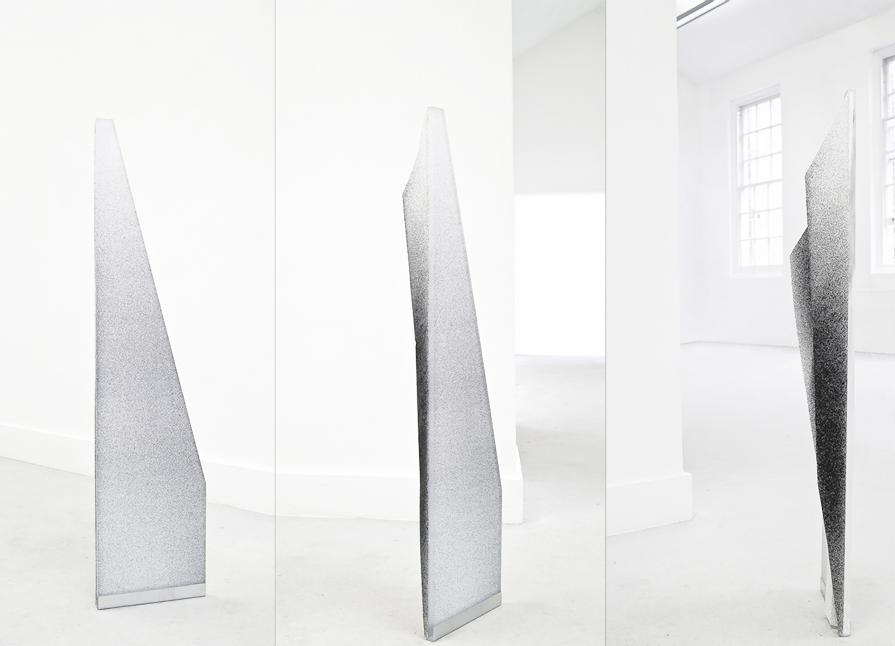Leak I
The sculptural and installation elements of my practice have evolved largely as a response to photography's material condition. Walead Beshty excellently summarizes it in his recent writings by pointing out two things:
One is that "it is curious that a medium that was born less than two hundred years ago, in the midst of the industrial revolution, would be the primary contemporary vehicle of the western pictorial tradition, as its more established siblings continue to reinvent, and intervene within the conventions of aesthetic reception;
Two, "photography not only adapted itself to the wall of the museum, but in adopting aluminium backframes and reflective plexiglass encasements, became materially continuous with the architecture that surrounded it. In short, photography became the wall of the institution."
The photograph's materiality has been consistently ignored and neutered in photographic theory, as exemplified by the writings of Barthes, Fried etc. And with digital, many doubt if the material matters anymore at all, forgetting that image does not equal photograph.
This particular piece addresses the problem on several levels. First and foremost, it is a photographic object, irreducible to the two dimensions of the pictorial plane. On the face of it (or rather, on one of its faces), the object conforms, as above, to the expectation of being materially continuous with institutional architecture - flat, slick, metal & plastic. It even looks like a model of a modern building. The image, however, is merely one of an enlarged light leak, light recorded falling directly onto film. The object pits the high production values of contemporary photography against the very basic photographic act before it becomes culturally codified and representational. With the pictorial plane so neutered, the spatial and architectural presence becomes ineluctable. At the same time, the print is allowed to leak, escape from the constraints of the encasement and take on its own shape (the creases follow the lines of the leak). As the rigid architectural face recedes, another form, elegant precarious and vulnerable, reveals itself.








Commenti 0
Inserisci commento